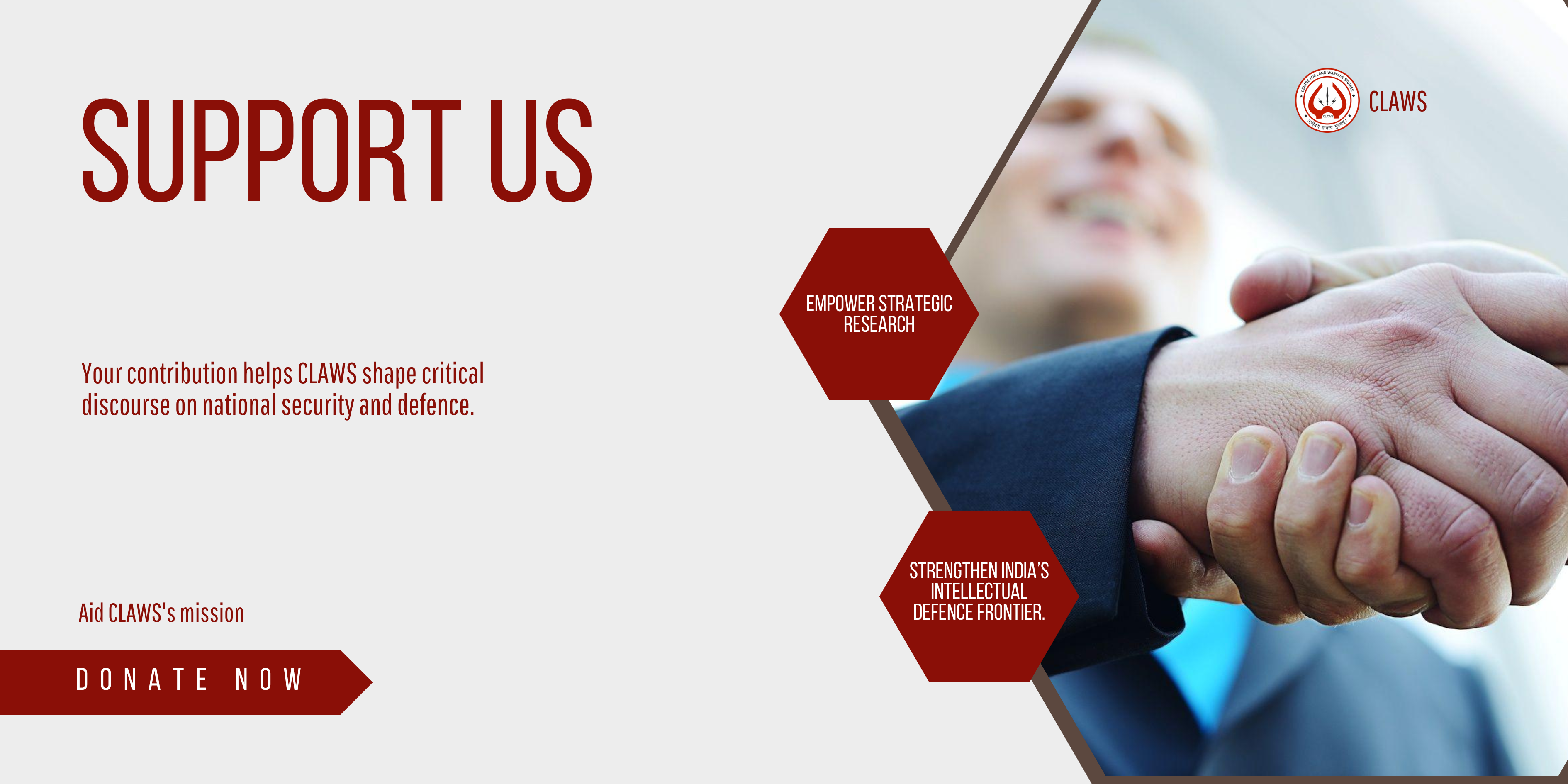The partnership between the European Union (EU) and China, previously marked by optimism and increasing collaboration, has deteriorated over past few years. A collaboration that initially started on mutual economic interests has gradually been overshadowed by strategic mistrust and divergent views. Today, what was once seen as a potential channel for dialogue and mutual advantage has been severely affected by complex and challenging dynamics influenced by competitiveness and uncertainty. This was seen most recently during the EU-China summit.
Overview of the Summit
The 25th EU-China Summit on 24th July 2025 had a symbolic significance of completing 50 years of diplomatic relations, however, the persistent structural tensions continues to cast a shadow on their partnership. While the only tangible result was the joint commitment for an enhanced climate cooperation, the summit fundamentally revealed divergences in individual geopolitical and security priorities.
On the economic front, EU highlighted systemic market distortions and a record of €305 billion trade deficit with China, signalling its willingness to implement proportionate measures if the imbalances continue.
Geopolitically, Brussels urged Beijing to leverage its influence to resolve Ukraine-Russia conflict. EU further conveyed that with its concern for global security, it expected China to reduce its support for Russia’s defence industry.
During the summit, the EU also reiterated concerns over human rights in Xinjiang, Tibet and Hong Kong. It also cautioned China against unilateral actions in the Taiwan Strait leading to instability in the East and South China Seas.
During the 40th EU-China Human Rights dialogue that took place in Brussels on 13th June 2025, EU presented its stance and raised serious concerns over the deterioration of fundamental freedoms in China. EU representatives strongly criticised Beijing on issues such as restrictions on freedom of expression, religion, and peaceful assembly, lack of judicial independence, use of forced labour, and cases of arbitrary detention and enforced disappearances. The bloc also highlighted the sufferings of ethnic and religious minorities, political prisoners, and activists, while calling for greater transparency, accountability, and cooperation with international human rights organisations and conventions.
Despite reaffirming a rules-based international order and committing to cooperative relations, the summit demonstrated that cooperation is narrowing to selective areas like climate, while there remains stark differences on matters like economic fairness and strategic alignment.
Geopolitical Balancing
During a closed four-hour meeting with EU Foreign Affairs Chief Kaja Kallas earlier this month, Chinese Foreign Minister Wang Yi reportedly stated that Beijing cannot accept Russia losing its war against Ukraine, as this would allow the United States to redirect its full attention toward China, revealing a stark contrast with China’s public posture of neutrality. This outlook underscores the strategic depth of the Sino-Russian partnership, which has extended beyond rhetoric into tangible economic support. Following the imposition of sweeping western sanctions on Moscow, China acted as an economic lifeline, becoming a key buyer of Russian energy and a major supplier of vehicles, electronics, and critical technologies. Bilateral trade between the two nations escalated to $240.1 billion in 2023, reflecting an increase of more than 25%, as transactions progressively changed to Renminbi to avoid Western financial constraints. For Beijing, this alignment is not merely opportunistic; Russia serves as a crucial strategic counterbalance to US dominance and helps securing China’s northern flank, contributing to Beijing’s broader ambition of shaping a multipolar world order.
Evolving Economic Relationship
China has been one of the key trading partners with EU over the years. In 2024, EU exported goods worth €213.2 billion to China and imported goods worth €519 billion. In the span of a decade, EU imports from China increased by more than 102%, while exports to China surged by only 47%. Despite the historical benefits, this close trading connection today displays concerns due to ongoing geopolitical tensions. China’s industrial policies like Made in China 2025 focusing on achieving technological self-reliance and global leadership, poses challenges to Europe’s ambitions for green and digital transitions. At the same time, Europe is also increasingly concerned about market failures driven by state subsidies, supply chain dependencies in critical sectors and the potential for China to weaponise its economic leverage for political gains. Europe is apprehensive of China investing in key infrastructure and associating its economy closely with security and military goals. EU is not aiming to cut off its trade ties completely with China due to the potential benefits. Instead it is adopting a “De-Risking” approach where it expands its supply chains with other trading partners and reduce reliance on China for critical technologies like batteries and chips.
De-risking in Practice
There are significant steps that EU has taken to De-Risk from China like introducing new trade defence tools, screening foreign investments, and securing critical raw materials through acts like the Net-Zero Industry Act and European Chips Act. It has also formed partnerships with countries such as the US, India and Japan to diversify its supply chains. The EU-Japan summit on 23rd July 2025, which preceded the EU-China summit, marked the inception of a competitive alliance and strengthened cooperation on supply chains and security, thereby highlighting how EU is diversifying its partnerships to reduce strategic dependence on China ahead of its engagement with Beijing.
Nevertheless, progress continues to be inconsistent. Europe is significantly dependent on China for essential commodities such as rare earth, pharmaceuticals, and critical components for green technology. Many initiatives have inadequate funding. Moreover, the EU also lags behind the US and China in sectors such as artificial intelligence investment and the expansion of innovative businesses. Internal disagreements among the member states exacerbates the complexity of coordinated action. For instance, Germany endorses de-risking in principle but prefers a more market-oriented strategy, with its major businesses broadening their scope in China. On the other hand, France advocates for a stronger state intervention to limit China’s role, while avoiding open confrontation. These differences among the states highlight Europe’s challenge of balancing economic security.
India as a Key Alternative
As EU seeks to diversify its economic options, India has emerged as a strategic alternative for trade, investment and technology cooperation. EU is already India’s largest trading partner with the Services trade also growing rapidly. Additionally India offers European businesses significant opportunities in sectors like manufacturing, green energy, and digital technologies. While challenges still persist like finalising the ongoing discussions on India-EU Free Trade Agreement, India’s strategic autonomy, young workforce, and commitment to sustainable development acts as a vital counterweight to China in the EU’s long-term economic strategy.
Conclusion
After decades of positive engagement, the EU-China relationship now appears to be entering a period of strain. At the 25th Summit, European Commission President Ursula von der Leyen described the partnership as being at an “inflection point,” and also highlighted that “ while the cooperation has deepened over the years, so too have the imbalances”. She further warned that China’s continued alignment with Russia has become a “determining factor” in shaping future ties with Brussels.
These developments suggest a shift away from the previously cooperative dynamics. From Beijing’s perspective, relations with the EU are increasingly viewed through the lens of US efforts to contain China, while Europe has become more wary of China’s strategic behaviour and assertiveness. In this context, rebuilding trust and sustaining collaboration seems to be increasingly difficult. Both sides are therefore exploring alternative partnerships such as EU strengthening ties with India thus creating more uncertainty surrounding the future of EU-China relations.














